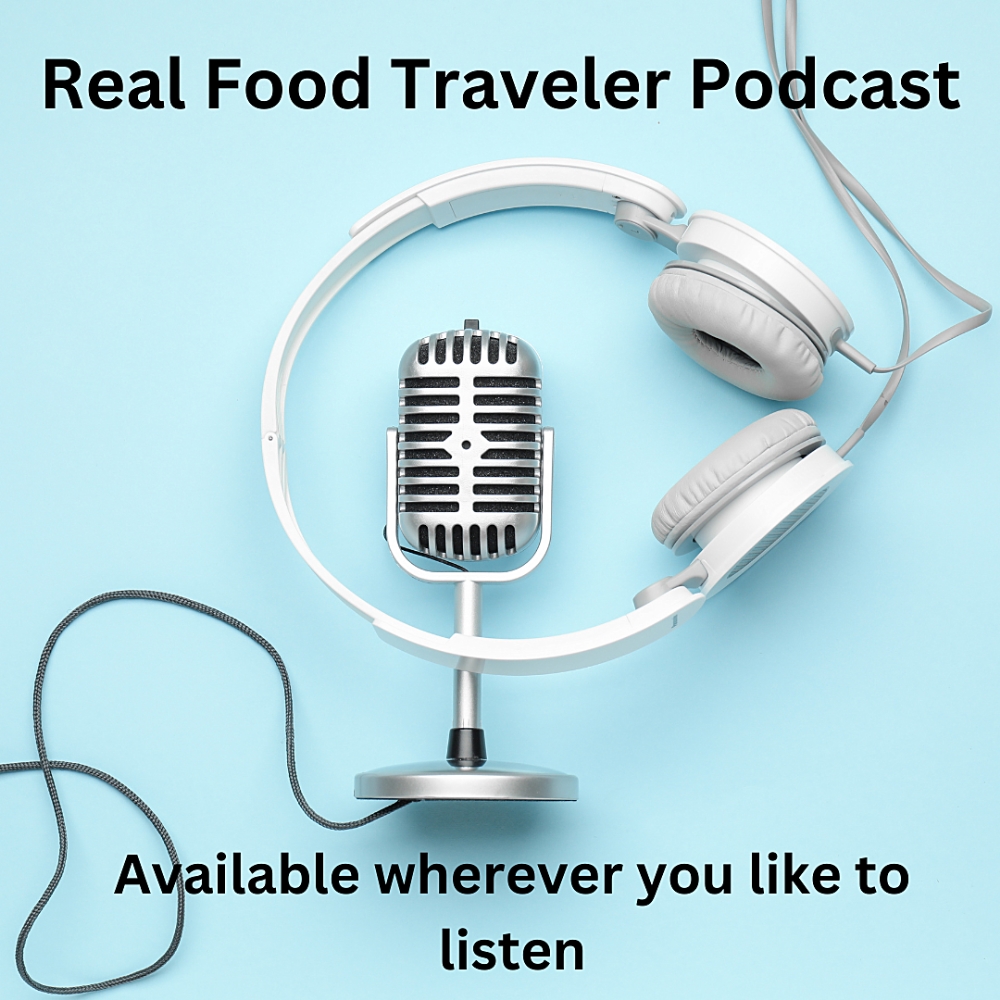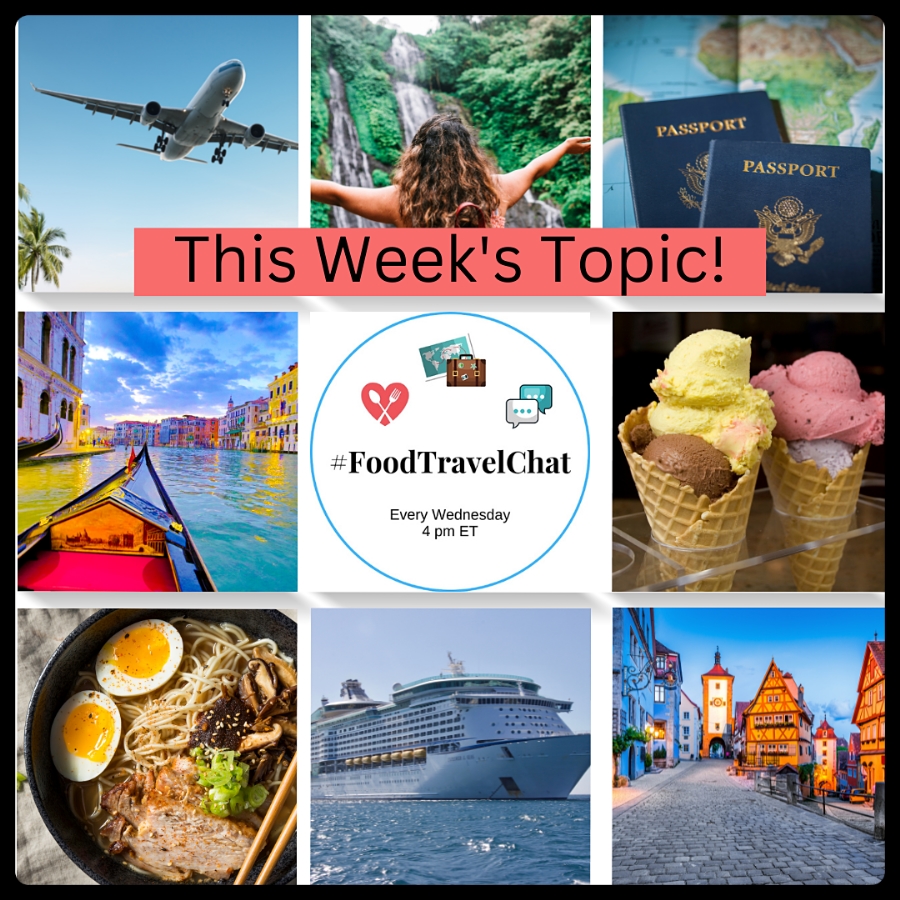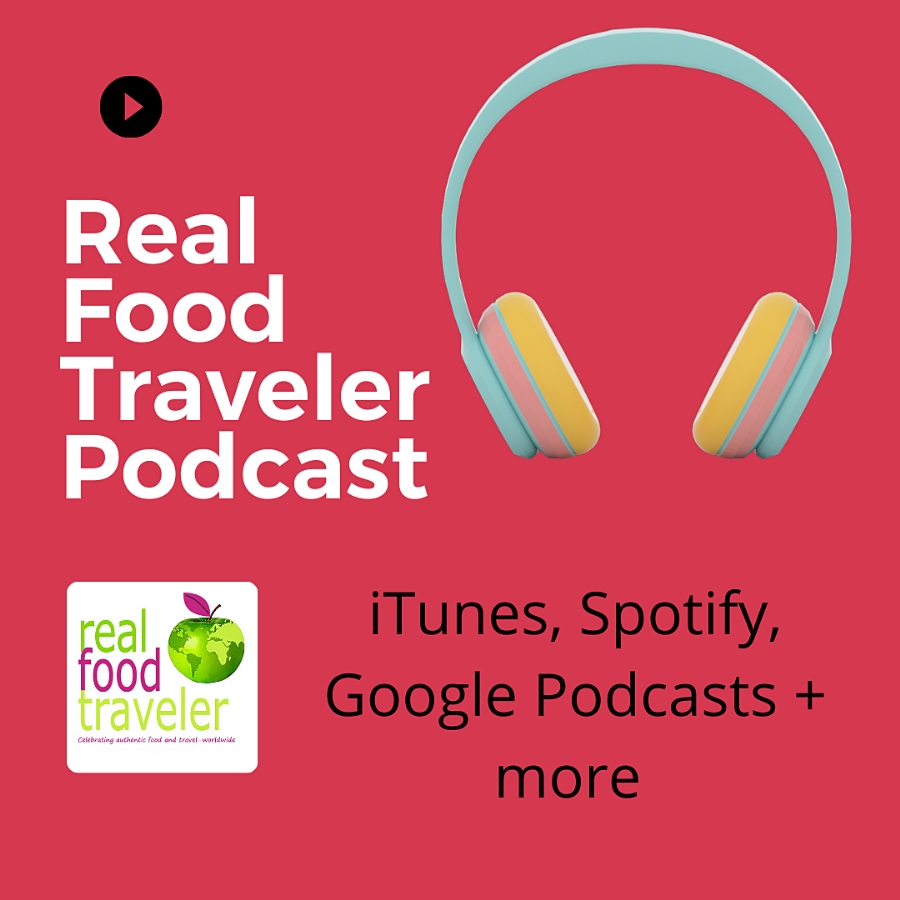On a visit to Fiji, writer Diane Covington-Carter had the opportunity to enjoy a multi-course meal of traditional and unique Fijian food at a local restaurant. As we welcome Diane as a contributor to Real Food Traveler, she shares what she feasted on and what she learned about Fiji’s cuisine and Fiji customs.

Save this article about the cuisine of Fiji to Pinterest to help plan your trip.
Feasting on Fijian food at the Hilton Fiji Beach Resort and Spa, Denarau Island
The sun was setting and the sky bright pink and orange as we settled in for a Fijian Feast…
My husband and I travel to New Zealand each winter to spend three months in our home there. This year, I thought it would be exciting to stop over in Fiji, so we booked our flights on Fiji Aiways. The new aircraft, the A350 Airbus had comfortable seats, even in economy, and the fares were reasonable.
Once in Fiji, we headed out to Likuliku Lagoon, a resort on the island of Malolo Levu, for three glorious days of snorkeling in crystal clear water, relaxing on the deck of our beach bure as we sipped champagne and listened to the lap of the waves. We learned about Likuliku’s eco-tourism and sustainability, even how it was able to bring back an extinct local iguana. We left inspired, refreshed, and vowing to always stop in Fiji on our way to New Zealand each year. We had discovered paradise.

The view from the McLennan Hilton in Fiji.
We needed to spend one night on the main island of Viti Levu, before an early flight the next morning out of Nadi International airport. We chose the Hilton Fiji Resort and Spa because we knew the Hilton brand from many stays in the US and liked the look of the property, with seven pools and a long stretch of beach. Little did we know that we would be enjoying an unforgettable Fijian Feast.
Our spacious suite had a fully-equipped kitchen, with a dishwasher, even a washer and dryer. “Wow, I could live here,” I thought, as I looked out at the ocean just steps away. After spending the day soaking in various pools and relaxing on lounge chairs on the beach, we headed to Koro, the adult only restaurant for a traditional Fijian Feast.

Feasting with a view at Koro restaurant. Photo courtesy the Hilton Fiji Beach Resort and Spa.
We were hosted by the Area General Manager of the resort, David Wells and Marketing and Communications Manager, Irene Edwards, both of whom I wanted to interview for this story.
Candles flickered on the tables as we passed the open kitchen where chefs put the finishing touches on various dishes. “Bula!” the traditional Fijian greeting meaning “Welcome!” they all called out as we passed. They said it like they meant it, with eyes sparkling and big, warm smiles.
Fiji is surrounded by water. So obviously, fish would star in our menu, along with other local ingredients – seaweed, coconuts, and pineapple in various delicious and creative forms.
“Koro, the name of the restaurant, is the Fijian word for ‘village,’ which means coming together to share, as we would in a village,” Edwards, a local Fijian, said. The restaurant features shared plates on its menu.
Hungry for more? Find out what it’s like to go island hopping in Fiji.
The Experience of Feasting on Fijian Food
To Start:
Kokoda, fish marinated in lemon juice, started our four-course menu. The lemon juice “cooked” our three types of fish, fresh lobster, clams and Spanish mackerel infused in bush lime juice, smoked coconut, garden garnish and plantain. Each was served in its own bowl, garnished with a creative flourish.
The tender and just-caught fish, coupled with the tangy taste of the lime and the slightly sweet coconut, created a light and tasty beginning to our feast.

Kokoda fish starter with lobster, clams, and mackerel infused with lemon juice.
“Entrée”:
In Fiji, “Entrée,” means just that – starter dishes, not the main course, as it does in the States. Our entrées featured:
Lumi pie-traditional seaweed pie, made with freshly squeezed coconut milk, lemon juice and chives.

Lumi Pie is an example of Fiji’s traditional food – seaweed pie with coconut milk, lemon juice and chives.
Kuita and coconut salad-Fijian waters octopus with julienne baby coconuts, papaya and pineapple, with a sesame cumquat vinaigrette.

Fijian waters octopus.
Ura Waitanutanu-smoked local prawns with lemon grass and chili dip.
Wacipoki-corned mutton, en papilotte in taro leaf and poached in coconut milk.
I had never had seaweed pie, (crunchy) or octopus, (chewy) and though I enjoyed the adventure of the two new and interesting dishes, I must admit that the smoked local prawns and the mutton took the awards for that course for me. I was tasting so many different and creative uses of coconut! Three of our four dishes had coconut in them in some form.
Mains:
Our main course arrived on a large platter for the four of us to share.
Lovo pork and chicken, cooked in a traditional earth oven roast.
Smoked Ika Vakalolo, flamed grilled Spanish mackerel with grilled pineapple, bok choy and a cilantro coconut sauce.
Dairo and ota vakamiti-steamed sea cucumber, with river ferns and smoked coconut cream.
The chicken and pork had been roasted in the ‘Lovo,” a traditional “earth oven roasting” method and tasted juicy and tender, with a slightly smoky flavor from the roasting. The mackerel with grilled pineapple and another version of coconut sauce, gave bursts of both sweet and sour to our taste buds.
I must admit that I didn’t want to think about the steamed sea cucumber, many of which I had seen as I snorkeled earlier in the week, but I decided to be courageous. The smoked coconut cream offered a diversion from the chewy texture.

Our main courses, served on banana leaves, with papaya and coconut garnish.
Dessert:
Ah dessert, or what they call, Celebration of Kamikamica (sweetness)
Vudi vakasoso-vanilla spiced coconut milk and plantain.
Tapioca vakalolo-traditional tapioca dumplings with a coconut caramel sauce.
Coconut Ice Cream with brown sugar coconut dredging.
Coconut starred in all three of these delicacies, yet each one offered a different version of the variety of flavors inherent in a coconut. All arrived on a large platter, artfully displayed on bright green banana leaves and surrounded by wedges of fresh coconut and papaya.
For me, the coconut ice cream took the prize – creamy, cold and sweet, with the brown sugar coconut dredging adding a contrast of crunchiness and an extra taste of sweetness. The dumplings in caramel sauce though, came in as a close second.

Dessert, a celebration of sweetness, Kamikamica.
Talking to the locals about Fijian Food and tradition
The resort has their own pastry kitchen and chef, who makes all the breads and baked goods. They use all local fruits, with nothing imported. I was commenting to Wells and Edwards how warm and friendly the staff all were and they both nodded. “For our workers here, hospitality comes naturally to them, from the heart,” Wells said.
Edwards talked about the local friendly and community-based lifestyle. “Sharing food, with fish and local ingredients, and the ‘Lovo’ style of roasting in the ground, like we are doing here, is how people of the village come together,” she said. “We love our seafood, we catch fish, prawns, octopus, gather other local ingredients, and we eat and celebrate together.”
Wells spoke about his efforts to have the resort support the local communities. Local artisans and crafts people display their wares in booths near the pools, giving the guests easy access to them. The hotel takes nothing from the sales, the money going back to the villages and community.
Also, once a week, locals from the nearby villages perform in a show, with drumming, music, dancing and a traditional kava ceremony. The program, called “A Taste of Fiji,” also features a large menu, where guests can pick and choose from many Fijian delicacies.
“The show is authentic, a genuine Fijian touchpoint,” Wells said. “We need to take care of and respect the traditional cultures.”
“We have three generations of families who come, year after year,” Wells said. “They are familiar with the Hilton brand, yet enjoy our innocent and unspoiled island paradise,” he said.
“Families can really relax here,” Edwards said. “It is a very friendly, community-based lifestyle and it is safe for the children to run free.” Describing the kid’s programs, she included watermelon smashing, coconut bowling, egg throwing, water aerobics and even an “amazing race.” “Something for everyone,” she said. “We even have nannies for babies and infants, for weary parents who need a break.”
The resort has two other restaurants, Maravu, which features Pan Asian dishes, Thai, Chinese and Japanese, and Nuku, for all day service and evening international cuisine. There is also a Deli, for snacks and sandwiches.

The chef puts the finishing touches on the Kokoda fish starter.
“With our suites, guests can choose to be either self-sufficient or a hotel guest, dining out,” Wells said. “We wanted to give them many options and choices.”
The “Taste of Fiji” feast and show run on Tuesday and Saturdays at the Nuku Restaurant.
— Story and photos, except where noted, by Diane Covington-Carter
Learn more about planning a trip to Fiji on this website.

















0 Comments